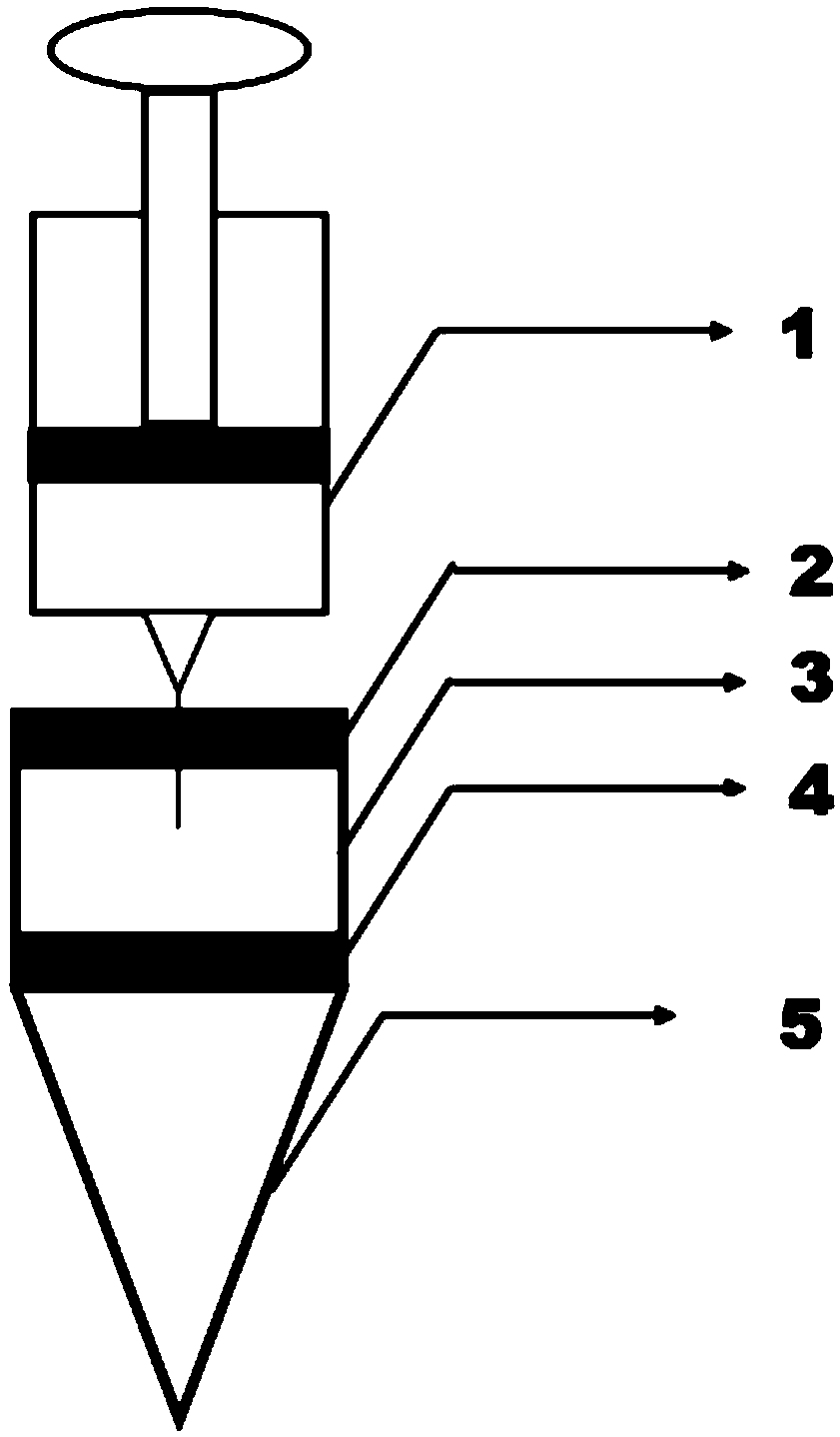Gene detection device
A technology for gene detection and extraction container, applied in the field of medical devices, can solve the problems of cumbersome steps, inconvenient to carry instruments, unable to observe the detection results, etc., and achieve the effects of simple operation, high reliability and convenient use
- Summary
- Abstract
- Description
- Claims
- Application Information
AI Technical Summary
Problems solved by technology
Method used
Image
Examples
Embodiment
[0045] This embodiment takes the adulteration detection of mutton as an example for illustration:
[0046] 1 Experimental materials
[0047] Cylinder; 1.5ml centrifuge tube; rubber stopper; syringe; lysate (137mM NaCl, 2.7mM KCl, 10mM Na2HPO4, 2mM KH2PO4, 10mM Tris-HCl and 1mM EDTA); RPA reagent; SYBR Green I or EVA Green fluorescent dye; Small UV flashlight; metal bath or water bath
[0048] Such as figure 1 As shown, the portable device includes a long cylinder 3 and a centrifuge tube 5 , and the long cylinder 3 and the centrifuge tube 5 are sealed and connected by a rubber stopper 4 . The top of the cylinder is sealed with another rubber stopper 2, which can be removed, put the sample in the cylinder, seal it with the rubber stopper, and then use the syringe 1 to draw 200 μl of the prepared lysate, and inject it into the cylinder through the needle The sample was lysed internally, left at room temperature for 1 min, and 2 μL of the supernatant was sucked and inserted int...
example 2
[0049] Example 2: Sample Extraction System
[0050] Put the sample in the cylinder, cover it with a rubber stopper, and use a syringe to draw 200 μL of lysate into the cylinder. This lysate can destroy the cell wall or cell membrane and expose the gene sample to the solution. It can be used after standing for one minute. The supernatant was used as the template for amplification, and was continuously injected into a 1.5ml centrifuge tube containing the reaction solution.
example 3
[0051] Example 3: Nucleic Acid Amplification
[0052] The characteristic of nucleic acid constant temperature amplification technology is that the whole process of amplification reaction is carried out at a single temperature without special amplification equipment, unlike PCR reaction, which needs to experience dozens of cycles of temperature changes. This characteristic of the constant temperature amplification technology makes it support the isothermal amplification platform used in the portable device of the present invention, and the temperature required for the amplification is realized by the heating ring. For example, RPA reaction, fluorescent dye, reaction buffer, etc. are added to the reaction centrifuge tube in advance, and the DNA template extracted from the cylinder is amplified at 37-42°C for 20 minutes in the test tube through a syringe. As time goes by, the fluorescent dye produces a higher fluorescent signal due to the combination with the double-stranded DNA,...
PUM
 Login to View More
Login to View More Abstract
Description
Claims
Application Information
 Login to View More
Login to View More - Generate Ideas
- Intellectual Property
- Life Sciences
- Materials
- Tech Scout
- Unparalleled Data Quality
- Higher Quality Content
- 60% Fewer Hallucinations
Browse by: Latest US Patents, China's latest patents, Technical Efficacy Thesaurus, Application Domain, Technology Topic, Popular Technical Reports.
© 2025 PatSnap. All rights reserved.Legal|Privacy policy|Modern Slavery Act Transparency Statement|Sitemap|About US| Contact US: help@patsnap.com

